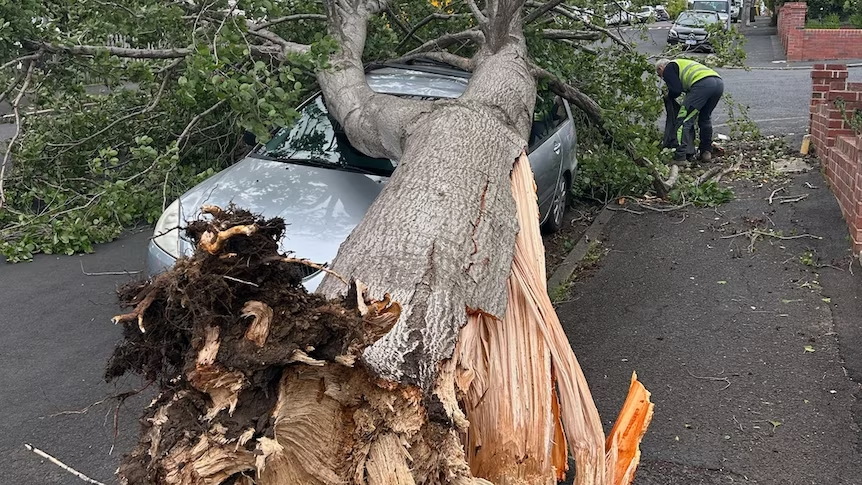- A slow-moving low-pressure system brought heavy rain to Tasmania, dumping a month’s worth of rain over a large part of the island.
- This was followed by another low-pressure system associated with extreme winds two days later.
- The rain loosened the soil, which meant that trees blew over more easily, wreaking havoc across the state’s south, including Hobart.
Throughout 21st and 22nd October, a slow-moving low- pressure system spent two days over Tasmania, bringing the heaviest rain day on the 22nd for over a year to many regions, including Hobart. This was followed by another system, which brought strong winds to the state on the 24th. The combination of these two systems brought down trees and caused widespread damage.
A low-pressure system developed over the Great Australian Bight on 20th October and tracked south-eastwards towards Tasmania. On the 21st, the intensifying system was located off the west coast of Tasmania leading to heavy rain, thunderstorms and showers. More than 40,000 lightning strikes were recorded as a line of thunderstorms moved across the state on the 21st, reaching Hobart just before midnight. Many sites in southern Tasmania recorded their highest daily rainfall for over a year, with Hobart reaching a total of 40 mm by 9am on the 22nd, recording 11 mm in just 10 minutes from 11:40 to 11:50 pm. The Huon River reached minor flood levels, however substantial widespread flooding did not occur. The associated wind was strong in places but not significant.
As the remnants of this slow-moving system were leaving the south-east of Tasmania on 23rd October, a subsequent system was forming south of the Western Australian coast.
This system developed, deepened and moved eastward, rapidly moving across Tasmania throughout the 24th. Winds reached speeds of 98 km/h in Hobart and 159 km/h on kunanyi/Mt Wellington, which are extreme but not uncommon for south-east Tasmania. However, with saturated soil, from the previous system, the effect of these gusts was compounded.
When the soil is saturated in windy conditions, the movement of the trees causes the wet soil to begin to act more like a fluid. Subsequently, some tree roots are no longer held firmly by the soil, but are moving through it, leading to trees falling more easily. This occurred in south-east Tasmania on 24th October, leading to widespread damage.
More than 7000 properties across the state lost power and several southern Tasmanian schools were closed for the day due to power outages. Properties, power lines, cars and other infrastructure were destroyed by falling trees. Damage to Hobart Show equipment meant delays to events. Many roads and paths in state parks had to be cleared of fallen trees.
If just one of these events occurred without the other, then the impacts would have been far less severe. Centre researchers have found that extreme winds-and-rain compound events will occur more frequently in many regions in the future, particularly if we do not reduce greenhouse gas emissions.

Research contacts:
Dr Nicholas Earl, nicholas.earl@utas.edu.au Dr Andrew King, andrew.king@unimelb.edu.au
